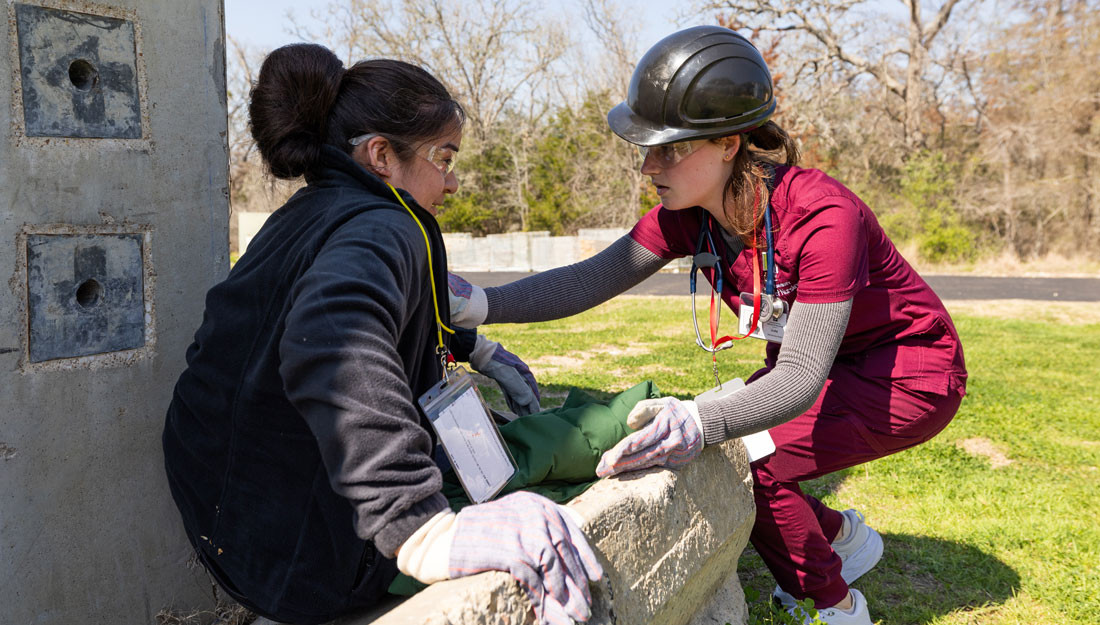- Mary Leigh Meyer
- COVID-19, Featured, Healthy Living, Medicine, Show on VR homepage, Trending
The growing role of telehealth during COVID-19 outbreak
The newest coronavirus increases concerns about in-person health care

COVID-19_Telehealth_Telebehavioral care_Telemedicine_A woman speaks to another woman over the hipaa-approved software
The newest coronavirus, COVID-19, is rapidly spreading across the globe. Those individuals with a suspected case of COVID-19 are being asked to self-quarantine for up to two weeks. Similarly, more and more health care providers are coming into routine contact with infected individuals, putting them at risk for contracting the disease themselves.
“With the restrictions this virus is putting on people and required quarantines, the medical and mental health fields are searching for creative solutions to care for COVID-19 patients while protecting communities from widespread exposure,” said Carly McCord, PhD, director of Telebehavioral Care at the Texas A&M University Health Science Center (Texas A&M Health) and clinical assistant professor in the Texas A&M College of Medicine and Texas A&M College of Education and Human Development. “Already, telehealth and telebehavioral health is being seen as part of the solution to some of the COVID-19 specific barriers to care.”
Telehealth during times of crisis
“Telehealth has always been a great option, but COVID-19 is now forcing the option for a lot of providers across the nation,” said Katie Console, program coordinator at Texas A&M Telebehavioral Care and counseling doctoral psychology student in the College of Education and Human Development. “Everyone is now asking the question if health care and society as a whole is ready for a potential viral outbreak of this scale.”
If a health care provider is believed to be exposed to COVID-19 while treating a patient, they are required to self-quarantine. This means providers will be unable to see patients in-person until they are proven to be free of the disease, a problem amid an already strained health care system. Similarly, patients may feel hesitant to seek help due to the fear of spreading the coronavirus to their community. Officials advise those who believe they may have the virus to call ahead to their health care providers to limit contact with others in waiting rooms. Telehealth and telebehavioral care could take these precautions to the next level.
Telehealth considerations and best practices
“Right now, we have seen a surge of health care providers seeking to add the telehealth model to their practice. We recommend they first consider proper training and learn best practices to provide highest-quality services possible to their patients,” McCord said. “Providers should not rush into the telehealth model without the proper supports. We offer online trainings and resources to help.”
All health care providers have laws and codes of ethics to abide by during practice. “These rules still apply if you change your method of health care delivery,” said Alexander Giovanetti, program coordinator at Texas A&M Telebehavioral Care and counseling doctoral psychology student at the College of Education and Human Development. “For example, providers adopting the telehealth model should make sure the video-conference program is HIPAA-compliant; otherwise they may violate laws, guidelines or professional ethics codes. Furthermore, if they do not know how this new, secure software works and are unable to help the patient troubleshoot from a distance, then they may be unable to successfully deliver services, and patients could go without much-needed care.”
McCord, Console and Giovanetti emphasized the importance of learning best practices and receiving telehealth-specific training.
There are a lot of things you have to think about before you transition to the telehealth and telebehavioral care model. “You do not know what you do not know,” they said.
The fundamentals of telehealth
For those who do not know, telehealth uses technology for direct service or as an adjunct to health care services. For example, the telehealth model uses video conferencing, wireless communications, remote data collection and image streaming, so health care professionals can reach patients who cannot make it to a clinic. This model mitigates the potential health care barriers of distance, lack of transportation, cost and a lack of providers. Furthermore, this model works especially well with chronic disease management—both physical and mental.
McCord and the rest of the Texas A&M Health Telebehavioral Care program provide grant-funded telehealth counseling to underserved residents across Texas. The clinic also sells time blocks to organizations across the state including institutions like the Washington County Jail, so they can offer mental health services “in-house.”
Texas A&M has led the movement towards telehealth through programs like this one and the Center for Excellence in Forensic Nursing, a program designed to develop and implement a telehealth program to bring forensic nurse expertise to areas that may not have a forensic nurse available.
Adding telehealth to your practice
“Telehealth is a great option for care all the time, and this outbreak is no different,” McCord said. “We encourage the adoption of telehealth services, as the model has proven effective time and time again when providers take the necessary preparation steps for high-quality care.”
Telehealth transcends physical barriers to bring health care to the patient. A significant amount of people in rural counties across the nation do not have reliable access to a health care provider. The telehealth model brings those health care services to those that need it most. Society is already moving towards a more technological society, so telehealth will continue to grow and become more and more important in the future. The newest coronavirus outbreak is just highlighting its importance and value.
Media contact: media@tamu.edu


